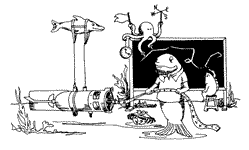
|
The IEEE Seventh Working Conference on Current Measurement TechnologyCurrent and Wave Monitoring and Emerging TechnologiesMarch 13-15 | Bahia Hotel | San Diego, CA, USA |
||
|
Technical Program Accomodations Order the Proceedings Committee and Contact Info |
||
Yangtze River ADCP Discharge Measurement Using Multiple External Sensor InputsRandy Marsden1, Chen Shongshen2, Ye Dexun3, Wei Jinchun4, Hening Huang51Inland Product Manager, RD Instruments, 9855
Businesspark Ave., San Diego, CA 92129, USA During high flow season, the sediment load of the Yangtze River can reach 20 grams per liter. When the sediment load is high, acoustic absorption and scattering interfere with the bottom tracking of ADCPs used to measure discharge on the Yangtze River. In addition, the Changjiang Water Resources Commission (CWRC) uses 30 meter steel hulled vessels to perform discharge measurements on much of the Yangtze River. The steel hull of the vessel prevents using the ADCP’s internal flux-gate compass as a heading reference. We performed tests to determine if accurate discharge measurement could be performed using an ADCP to measure water velocity, a depth sounder for water depth, DGPS to determine vessel speed over ground, and a gyrocompass to provide heading information. The tests were performed during normal flow conditions when the ADCP bottom tracking is reliable. Using four different ADCPs with the three other external devices, we measured discharge at the CWRC Three Gorges Huangling Temple Hydrology Station. Discharge computed using the external depth sounder, DGPS, and gyrocompass was found to be within 2% of the discharge computed using the ADCP alone. The results of those tests are presented in this paper. Submitted on January 22, 2003 |
|
Sponsored by the Current Measurement Technology Committee (CMTC) of the IEEE Oceanic Engineering Society. All content reserved. Contact jrizoli@whoi.edu for more information. |
||